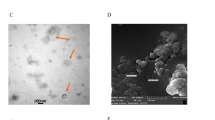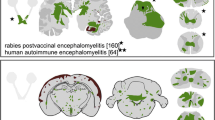Abstract
Activation of mitochondrial ATP-sensitive potassium (KATP) channels is postulated as an effective mechanism to confer cardio and neuroprotection, especially in situations associated to oxidative stress. Pharmacological activation of these channels inhibits glia-mediated neuroinflammation. In this way, diazoxide, an old-known mitochondrial KATP channel opener, has been proposed as an effective and safe treatment for different neurodegenerative diseases, demonstrating efficacy in different animal models, including the experimental autoimmune encephalomyelitis (EAE), an animal model for Multiple Sclerosis. Although neuroprotection and modulation of glial reactivity could alone explain the positive effects of diazoxide administration in EAE mice, little is known of its effects on the immune system and the autoimmune reaction that triggers the EAE pathology. The aim of the present work was to study the effects of diazoxide in autoimmune key processes related with EAE, such as antigen presentation and lymphocyte activation and proliferation. Results show that, although diazoxide treatment inhibited in vitro and ex-vivo lymphocyte proliferation from whole splenocytes it had no effect in isolated CD4+ T cells. In any case, treatment had no impact in lymphocyte activation. Diazoxide can also slightly decrease CD83, CD80, CD86 and major histocompatibility complex class II expression in cultured dendritic cells, demonstrating a possible role in modulating antigen presentation. Taken together, our results indicate that diazoxide treatment attenuates autoimmune encephalomyelitis pathology without immunosuppressive effect.






Similar content being viewed by others
References
Abadie V, Bonduelle O, Duffy D, Parizot C, Verrier B, Combadiere B (2009) Original encounter with antigen determines antigen-presenting cell imprinting of the quality of the immune response in mice. PLoS One 4:e8159
Alberici LC, Paim BA, Zecchin KG, Mirandola SR, Pestana CR, Castilho RF, Vercesi AE, Oliveira HC (2013) Activation of the mitochondrial ATP-sensitive K + channel reduces apoptosis of spleen mononuclear cells induced by hyperlipidemia. Lipids Health Dis 12:87
Almolda B, Gonzalez B, Castellano B (2011) Antigen presentation in EAE: role of microglia, macrophages and dendritic cells. Front Biosci 16:1157–1171
Beeton C, Wulff H, Standifer NE, Azam P, Mullen KM, Pennington MW, Kolski-Andreaco A, Wei E, Grino A, Counts DR, Wang PH, LeeHealey CJ, Andrews S, Sankaranarayanan A, Homerick D, Roeck WW, Tehranzadeh J, Stanhope KL, Zimin P, Havel PJ, Griffey S, Knaus HG, Nepom GT, Gutman GA, Calabresi PA, Chandy KG (2006) Kv1.3 channels are a therapeutic target for T cell-mediated autoimmune diseases. Proc Natl Acad Sci U S A 103:17414–17419
Bittner S, Bobak N, Herrmann AM, Gobel K, Meuth P, Hohn KG, Stenner MP, Budde T, Wiendl H, Meuth SG (2010) Upregulation of K2P5.1 potassium channels in multiple sclerosis. Ann Neurol 68:58–69
Busija DW, Gaspar T, Domoki F, Katakam PV, Bari F (2008) Mitochondrial-mediated suppression of ROS production upon exposure of neurons to lethal stress: mitochondrial targeted preconditioning. Adv Drug Deliv Rev 60:1471–1477
Carrasco-Marin E, Paz-Miguel JE, Lopez-Mato P, Alvarez-Dominguez C, Leyva-Cobian F (1998) Oxidation of defined antigens allows protein unfolding and increases both proteolytic processing and exposes peptide epitopes which are recognized by specific T cells. Immunology 95:314–321
Carson MJ, Reilly CR, Sutcliffe JG, Lo D (1998) Mature microglia resemble immature antigen-presenting cells. Glia 22:72–85
Carson MJ, Doose JM, Melchior B, Schmid CD, Ploix CC (2006) CNS immune privilege: hiding in plain sight. Immunol Rev 213:48–65
Freund A, Orjalo AV, Desprez PY, Campisi J (2010) Inflammatory networks during cellular senescence: causes and consequences. Trends Mol Med 16:238–246
Gallo PM, Gallucci S (2013) The dendritic cell response to classic, emerging, and homeostatic danger signals. Implications for autoimmunity. Front Immunol 4:138
Ghanshani S, Wulff H, Miller MJ, Rohm H, Neben A, Gutman GA, Cahalan MD, Chandy KG (2000) Up-regulation of the IKCa1 potassium channel during T-cell activation. Molecular mechanism and functional consequences. J Biol Chem 275:37137–37149
Gocke AR, Lebson LA, Grishkan IV, Hu L, Nguyen HM, Whartenby KA, Chandy KG, Calabresi PA (2012) Kv1.3 deletion biases T cells toward an immunoregulatory phenotype and renders mice resistant to autoimmune encephalomyelitis. J Immunol 188:5877–5886
Goverman J (2009) Autoimmune T cell responses in the central nervous system. Nat Rev Immunol 9:393–407
Holmuhamedov E, Lewis L, Bienengraeber M, Holmuhamedova M, Jahangir A, Terzic A (2002) Suppression of human tumor cell proliferation through mitochondrial targeting. FASEB J 16:1010–1016
Huang L, Li W, Li B, Zou F (2006) Activation of ATP-sensitive K channels protects hippocampal CA1 neurons from hypoxia by suppressing p53 expression. Neurosci Lett 398:34–38
Ichinose M, Yonemochi H, Sato T, Saikawa T (2003) Diazoxide triggers cardioprotection against apoptosis induced by oxidative stress. Am J Physiol Heart Circ Physiol 284:H2235–H2241
Judge SI, Bever CT Jr (2006) Potassium channel blockers in multiple sclerosis: neuronal Kv channels and effects of symptomatic treatment. Pharmacol Ther 111:224–259
Judge SI, Smith PJ (2009) Patents related to therapeutic activation of K(ATP) and K(2P) potassium channels for neuroprotection: ischemic/hypoxic/anoxic injury and general anesthetics. Expert Opin Ther Pat 19:433–460
Kuras Z, Yun YH, Chimote AA, Neumeier L, Conforti L (2012) KCa3.1 and TRPM7 channels at the uropod regulate migration of activated human T cells. PLoS One 7:e43859
Liu X, Wu JY, Zhou F, Sun XL, Yao HH, Yang Y, Ding JH, Hu G (2006) The regulation of rotenone-induced inflammatory factor production by ATP-sensitive potassium channel expressed in BV-2 cells. Neurosci Lett 394:131–135
Mannhold R (2004) KATP channel openers: structure-activity relationships and therapeutic potential. Med Res Rev 24:213–266
Marshall NA, Vickers MA, Barker RN (2003) Regulatory T cells secreting IL-10 dominate the immune response to EBV latent membrane protein 1. J Immunol 170:6183–6189
Meuth SG, Kleinschnitz C, Wiendl H (2008) Recent clinical trials and future therapies. J Neurol 255(Suppl 6):93–96
Miura T, Miki T (2003) ATP-sensitive K + channel openers: old drugs with new clinical benefits for the heart. Curr Vasc Pharmacol 1:251–258
Moghtadaei M, Habibey R, Ajami M, Soleimani M, Ebrahimi SA, Pazoki-Toroudi H (2012) Skeletal muscle post-conditioning by diazoxide, anti-oxidative and anti-apoptotic mechanisms. Mol Biol Rep 39:11093–11103
Mora JR, Cheng G, Picarella D, Briskin M, Buchanan N, von Andrian UH (2005) Reciprocal and dynamic control of CD8 T cell homing by dendritic cells from skin- and gut-associated lymphoid tissues. J Exp Med 201:303–316
Nichols CG (2006) KATP channels as molecular sensors of cellular metabolism. Nature 440:470–476
O’Connor RA, Anderton SM (2008) Foxp3+ regulatory T cells in the control of experimental CNS autoimmune disease. J Neuroimmunol 193:1–11
Olsen ML, Sontheimer H (2008) Functional implications for Kir4.1 channels in glial biology: from K + buffering to cell differentiation. J Neurochem 107:589–601
Quintana A, Kummerow C, Junker C, Becherer U, Hoth M (2009) Morphological changes of T cells following formation of the immunological synapse modulate intracellular calcium signals. Cell Calcium 45:109–122
Rahn EJ, Iannitti T, Donahue RR, Taylor BK (2014) Sex differences in a mouse model of multiple sclerosis: neuropathic pain behavior in females but not males and protection from neurological deficits during proestrus. Biol Sex Differ 5(1):4
Rodriguez MJ, Martinez-Moreno M, Ortega FJ, Mahy N (2013) Targeting microglial K(ATP) channels to treat neurodegenerative diseases: a mitochondrial issue. Oxidative Med Cell Longev 2013:194546
Shrikant P, Benveniste EN (1996) The central nervous system as an immunocompetent organ: role of glial cells in antigen presentation. J Immunol 157:1819–1822
Skaper SD (2011) Ion channels on microglia: therapeutic targets for neuroprotection. CNS Neurol Disord Drug Targets 10:44–56
Steinhauser C, Seifert G, Bedner P (2012) Astrocyte dysfunction in temporal lobe epilepsy: K + channels and gap junction coupling. Glia 60:1192–1202
Toldi G, Folyovich A, Simon Z, Zsiga K, Kaposi A, Meszaros G, Tulassay T, Vasarhelyi B (2011) Lymphocyte calcium influx kinetics in multiple sclerosis treated without or with interferon beta. J Neuroimmunol 237:80–86
Trapp BD, Nave KA (2008) Multiple sclerosis: an immune or neurodegenerative disorder? Annu Rev Neurosci 31:247–269
Tsunoda I, Libbey JE, Kuang LQ, Terry EJ, Fujinami RS (2005) Massive apoptosis in lymphoid organs in animal models for primary and secondary progressive multiple sclerosis. Am J Pathol 167:1631–1646
Virgili N, Espinosa-Parrilla JF, Mancera P, Pasten-Zamorano A, Gimeno-Bayon J, Rodriguez MJ, Mahy N, Pugliese M (2011) Oral administration of the KATP channel opener diazoxide ameliorates disease progression in a murine model of multiple sclerosis. J Neuroinflammation 8:149
Virgili N, Mancera P, Wappenhans B, Sorrosal G, Biber K, Pugliese M, Espinosa-Parrilla JF (2013) KATP channel opener diazoxide prevents neurodegeneration: a new mechanism of action via antioxidative pathway activation. PLoS One 8:e75189
Wang H, Li J, Follett PL, Zhang Y, Cotanche DA, Jensen FE, Volpe JJ, Rosenberg PA (2004) 12-Lipoxygenase plays a key role in cell death caused by glutathione depletion and arachidonic acid in rat oligodendrocytes. Eur J Neurosci 20:2049–2058
Wang J, Li Z, Feng M, Ren K, Shen G, Zhao C, Jin X, Jiang K (2013) Opening of astrocytic mitochondrial ATP-sensitive potassium channels upregulates electrical coupling between hippocampal astrocytes in rat brain slices. PLoS One 8:e56605
Xie J, Duan L, Qian X, Huang X, Ding J, Hu G (2010) K(ATP) channel openers protect mesencephalic neurons against MPP + −induced cytotoxicity via inhibition of ROS production. J Neurosci Res 88:428–437
Yamada K, Inagaki N (2005) Neuroprotection by KATP channels. J Mol Cell Cardiol 38:945–949
Yasu T, Ikeda N, Ishizuka N, Matsuda E, Kawakami M, Kuroki M, Imai N, Ueba H, Fukuda S, Schmid-Schonbein GW, Saito M (2002) Nicorandil and leukocyte activation. J Cardiovasc Pharmacol 40:684–692
Zhou F, Yao HH, Wu JY, Ding JH, Sun T, Hu G (2008) Opening of microglial K(ATP) channels inhibits rotenone-induced neuroinflammation. J Cell Mol Med 12:1559–1570
Acknowledgments
We thank Dr. Pablo Villoslada and the members of the Neuroimmunology Group from Hospital Clínic-IDIBAPS, Barcelona, Spain for their scientific and technical assistance. We also thank Dr. Javier Bustos from Neurotec Pharma and Dr. Georgina Sorrosal, Dr. Clara Campàs, Dr. Mercè de Frias from Advancell for their critical review of the manuscript. MJR work is supported by grant IPT-2012-0614-010000 from the Ministerio de Economia, and by grant 2009 SGR1380 from the Generalitat de Catalunya, Spain.
Competing Interests
NV, PM, MP, JFEP have applied for a PCT application “Diazoxide for use in the treatment of a central nervous system (CNS) autoimmune demyelinating disease” (application number PCT/EP2011/050049). MP is CEO in Neurotec Pharma and also holds shares in the company. NV, PM, BW, JFEP are employed in Neurotec Pharma. CC, AW, MJR and CID declares no competing interests.
Author information
Authors and Affiliations
Corresponding author
Additional information
J. F. Espinosa-Parrilla and M. Pugliese equally contributing senior authors
Rights and permissions
About this article
Cite this article
Virgili, N., Mancera, P., Chanvillard, C. et al. Diazoxide Attenuates Autoimmune Encephalomyelitis and Modulates Lymphocyte Proliferation and Dendritic Cell Functionality. J Neuroimmune Pharmacol 9, 558–568 (2014). https://doi.org/10.1007/s11481-014-9551-3
Received:
Accepted:
Published:
Issue Date:
DOI: https://doi.org/10.1007/s11481-014-9551-3




